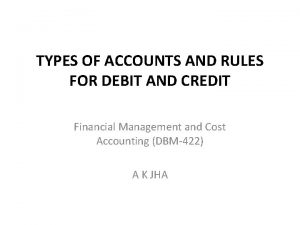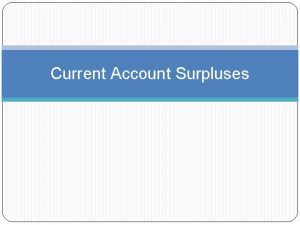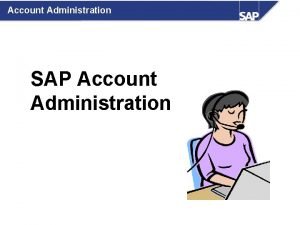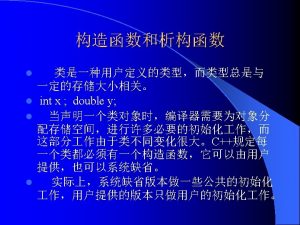CURRENT ACCOUNT The current account measures the total




- Slides: 4

CURRENT ACCOUNT The current account measures the total of all transactions that involve a) Trading activities b) Earning and paying incomes from investments c) Transfers by Government. The Four sections of CURRENT ACCOUNT are: BALANCE ON GOODS BALANCE ON SERVICES BALANCE ON INCOME BALANCE ON CURRENT TRANSFERS

CAPITAL ACCOUNT This section records all transactions that involve • receipt or payment of Capital transfers, example Migrants wealth • Acquisition and disposal of Intangible assets (Non-Produced, Non- Financial assets) example: Patents, copyrights etc. • Debt forgiveness – when creditors from one country formally agree to waive all or part of a debt from a debtor in another country. All these transactions are without counterpart transactions In other words - ‘one way’

FINANCIAL ACCOUNT This includes all transactions associated with • Change in ownership in international financial assets and liabilities There are 4 sections under this: PORTFOLIO INVESTMENT DIRECT INVESTMENT OTHER INVESTMENT RESERVE ASSET

PORTFOLIO INVESTMENT: When assets bought in a firm is LESS THAN 10% DIRECT INVESTMENT: When assets bought in a firm is MORE THAN 10% OTHER INVESTMENT: These include Overseas currency, Overseas loans & deposits and trade credits RESERVE ASSET: It is NZ’s official OVERSEAS RESERVE held by RBNZ and Government. Finally when ALL the components are added up, the residual or balance left over is termed as the ‘NET ERRORS & OMISSIONS’. It is a Rounding figure which helps bring the balances to ZERO.







